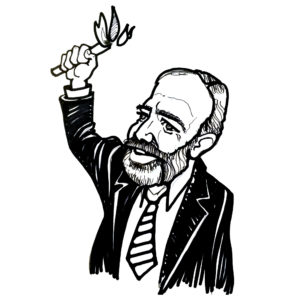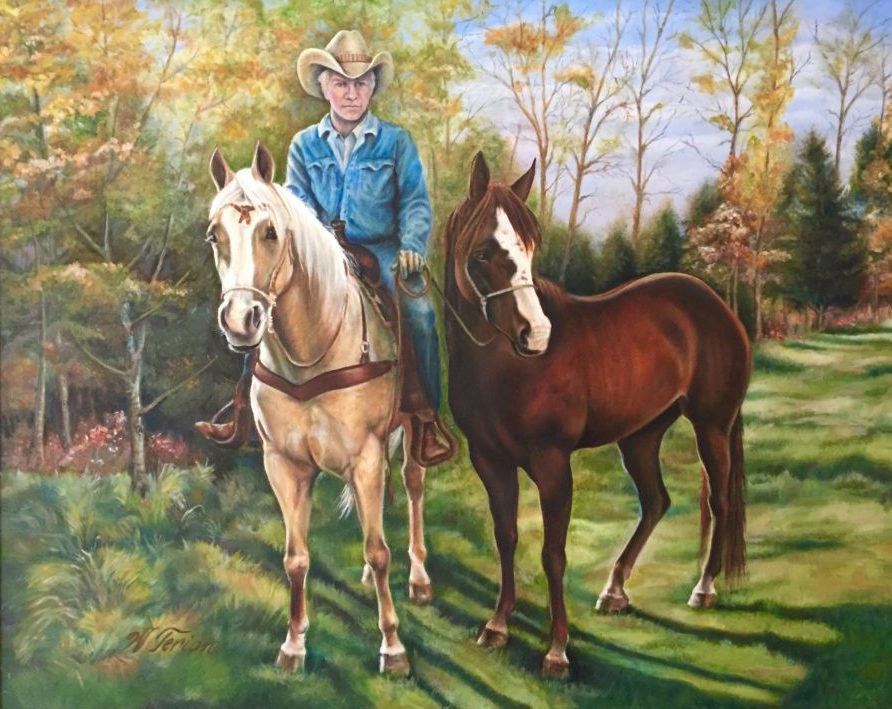
William “Bill” Terian has been an artist for most of his life. He has served as an illustrator for local newspapers and even the IRS. So, when The Armenian Weekly put out a call for contributors earlier this year, he was eager to lend his talents not with words, but with pictures.
“They were really looking for journalists,” he told me. “But I thought, you know, I’m going to go ahead and call. Maybe I could just make myself available.”

“In the past, The Weekly was always home to sketches and political cartoons from members of the community. It is a valuable part of our heritage, in fact, which really helped set this newspaper apart from others,” says Karine Vann, current editor of The Armenian Weekly. “But somewhere along the way, this tradition was interrupted. The little illustrations that used to accompany our columns, and political cartoons stopped appearing in the paper and for quite some time now, we haven’t had a regular cartoonist. We’re thrilled to be able to bring this important element back. Bill’s drawings really bring a lot of aesthetic and emotional impact to the paper.”
Bill has since contributed a number of political and topical cartoons, as well as more stationary elements, like mastheads for columnists, on a regular basis. One of his favorites is the drawing (right), which forms the masthead to one of The Weekly’s popular columns, Notes from the Pink City, penned by the notoriously provocative, Canadian-Armenian repat Raffi Elliott. The sketch features one of Yerevan’s most notable landmarks, the Opera building, with Mt. Ararat hovering majestically in the background.
Earlier this month, I got the opportunity to talk with Bill about everything from his long career as an illustrator, to his family, and his current pursuit of oil painting.

Shami Barooshian: Let’s start with your background as an illustrator.ow did you end up in that line of work?
Bill Terian: I always wanted to be an artist, but I had to support myself. I veered away from that goal for probably a half a dozen years or so and I went into computers. Then, I was finally able to get a job at The Detroit News as an apprentice artist. I stayed there for about five years. It’s probably the most fun job I ever had. I had a variety of assignments, illustrations, cartoons, maps. But the Detroit News went through some changes where they had to lay off about 160 employees, so I was out of work. I couldn’t find a job as an illustrator in Detroit—not for a newspaper, anyway. So I had to take whatever was available, and I started to work for General Motors at their gear and axle plant. I stayed there for a year until I got a job at the IRS as an illustrator. I worked on safety bulletins, posters, flip charts, cartoons, caricatures.here was really a variety of different projects that they gave us. I can remember one time they asked me to draw a painting of the Star Trek spaceship for a special event.
S.B.: And you stayed at the IRS for most of your career?
B.T.: I stayed there for 32 and a half years. I used to tell my friends, as an illustrator, I never felt like I was going to work, I felt like I was going to fun.
S.B.: Where do you get the inspiration for your Armenian Weekly cartoons and drawings?
B.T.: They just come to me. I read something that seems ridiculous or strange and an idea pops up in my head and I say, “You know, that might be worth illustrating.” There’s a lot of truth in cartoons. There’s truth in humor. I know some people, especially now with our current president; some people like him, some people don’t. But in any case, it opens a dialogue.

S.B.: Where would you say your interest in art and drawing came from?
B.T.: I was interested in drawing when I was about three, and the first thing I remember ever drawing was a horse. I’ve always had a fascination about horses, and I spent a good deal of my young years drawing horses. My father had artistic skills. My father came from Yerevan and, after the war, he and my mother were in a displaced persons camp in Germany. While we were there, lack of food was a problem. The only way my father got by was through his art. He painted signs for the Germans, and they would give him the rotten potatoes, whatever, vegetables, a little bit extra food to eat.
S.B.: When did your family arrive in the United States?
B.T.: My brother and I were both born in Germany. Then, after the camp, people were given the choice about where they wanted to go—if they wanted to be relocated back to their country of origin or go to some other country. My father said he’d like to come to America. We came to this country as indentured servants. My parents had to work their passage off, so they had to work for a farmer in Kentucky for three years. Then we moved to Detroit once the debt was paid.

S.B.: Was your mother an artist, too?
B.T.: My mother’s Bulgarian. She met my father in the displaced persons camp. She had a third-grade education. When I was 11, they divorced. They both had very strong personalities. They both were survivors. They both worked for everything they had. She worked in a kitchen and she saved and bought herself a little house, got herself a car, got herself a driving license. She learned how to speak and write English. She saved more, and she bought herself a 13-room boarding house, which provided her income. So for a woman who only had a third-grade education, she was something. She was really a force of nature.
S.B.: What kinds of art are you focused on now that you’re retired, in addition to your work for the Weekly?
B.T.: A few years back I decided that I wanted to learn how to oil paint, so I started taking classes. I’m proud of all my paintings, but the two horses with me on horseback is my favorite. I’m still going to class twice a week. Maybe by the time I’m 90 I’ll finally know what I’m doing. My wife is my biggest critic. She’s got a very good eye. One set of eyes never does it with a painting. You’ve got to have more than one set of eyes because when you look at a painting for so long, you just stop seeing it.
There’s a lot of truth in cartoons. There’s truth in humor. I know some people, especially now with our current president; some people like
him, some people don’t. But in any case, it opens a dialogue.
S.B.: How did you meet your wife?
B.T.: I was married twice. My first wife passed away when I was 40. I met her in Lebanon—I went there to find a wife. I knew my first wife two days before I asked her to marry me. Now, with my second wife, Araxie, I was a little bit more cautious—I wanted to be sure. So, I waited for three days.

S.B.: She said yes after three days?
B.T.: Yes! And we’ve been married for 30 years.
S.B.: You mentioned you’ve always been interested in painting horses—is there a particular reason you like to paint them?
As a kid, I was always interested in horses. When I was 17, I bought myself a horse, but by the time I turned 24 I really had to concentrate on being a husband and a provider. So when I turned 40, I decided to pursue my dream. I decided to build a house in the country and keep horses. I found a lovely piece of property and I built a house, a barn, and I purchased two horses. It was great fun. And then I decided at the age of 60 to pursue my childhood dreams and become a cowboy. So, I joined the mounted police. What could be better than that?
S.B.: Do you still live on the farm today?
Well, my wife told me: “For the last 28 years you had your dream, you got to do everything you wanted to do. Now,” she said, “It’s my turn.” So we sold the farm and moved into the village. It’s a beautiful spot. So that’s what we’re doing now. We’re in a townhouse, and we go for walks twice a day. In the evenings, I do my art things for the paper. And I try to contribute to the Armenian community with the gifts that God has given me, and I hope that people appreciate them.
*Responses have been lightly edited for clarity.
Author information
The post A Conversation with Armenian Weekly Cartoonist and Illustrator, Bill Terian appeared first on The Armenian Weekly.
Source: Armenian Weekly
Link: A Conversation with Armenian Weekly Cartoonist and Illustrator, Bill Terian
